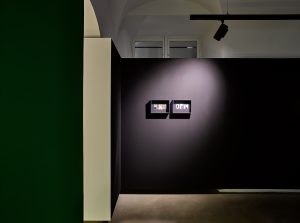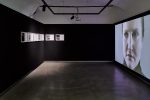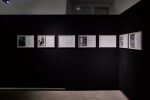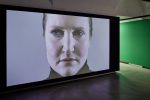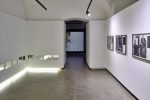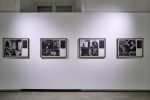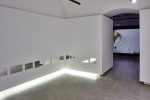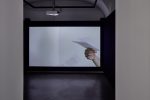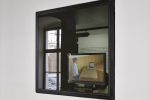Exhausted Time
Ana Hoffner
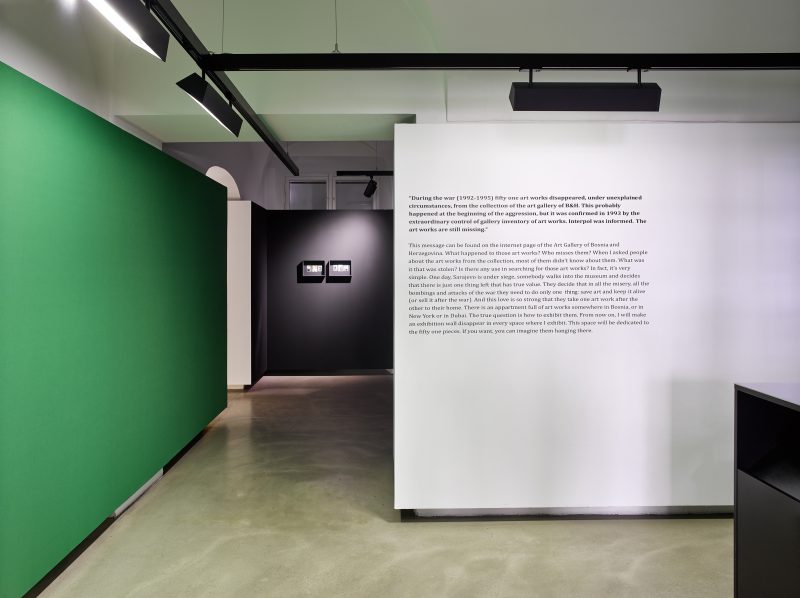
The title “Exhausted Time” refers to the condition of an instant as well as to the time that follows. On the basis of stories, reports, facts and experiments, in her video installations, photographic works and objects Ana Hoffner leads the exhibition visitors to different narrative threads, the exhausted time following crises, conflicts or wars. These begin to reveal a common paradigm, as well as stimulating reflection about our own thought patterns and ways of seeing things.
The performative, media deconstruction of the single press image published by the US-American White House on the death of Osama Bin Laden plays with a combination of the picture created by words spoken and images actually broadcast on screen. In contrast to TV news, where the power of the images takes precedent over the underlaid soundtrack, in Framing Livestream Hoffner stages this form of visual representation and creates an imaginary reflection of media images. The visitors’ imagination and capacity for invention is taken further in the work Fifty-one Pieces – Believing in Art. An apparently existent, empty exhibition wall is made to disappear with a digital magic trick. In narrative terms, this wall is linked to the history of the one hundred and fifty works of art that have officially disappeared from the state art gallery in Bosnia&Herzegovina since 1993. The wall covered in greenbox material serves as a projection surface for a very private, imagined simulation of these fifty-one works’ presentation.
Confronted as a young person with images on Austrian television showing the violence and cruelty of the war in Yugoslavia, in the video installation Transferred Memories – Embodied Documents Ana Hoffner translated this experience onto a completely different projection surface: that of the film “Persona” by Ingmar Bergman. Hoffner projects her protagonists onto those of the film, thus making the story of being taken prisoner and everyday life in one of the most notorious prisoner-of-war camps during the Yugoslavian war appear in the visual realm of 1960s cinema.
An illustrative pendant is provided by the photo work Future Anterior – Illustrations of War hung opposite. The photo series by commercial photographer Steven Meisel, which was published in Vogue, represents scenes of sexual violence perpetrated against women (female models) by soldiers/police. In a further contrast to the audio report of experience in the prison camp Omarska, which can be heard in the space as it emanates from the video installation, the style of the text accompanying the photo series is dry and succinct.
The other photographic work in the room investigates the question of representing and interpreting identity. The people depicted in The Queer Family Album – Me and my three daddies adopt diverse roles and relationships to each other. The boundaries between different categories and those defining the triangular mother/father/child or family/nation/state relationships are blurred and combined with politics and its conciliating gestures of affiliation.
The debate with media, body and indentity continues in the next room on the Mirror Stage – Spiegelstadium. As a rule, we sit in front of screens and stand in front of mirrors in order to encounter our reflections at eye level, but here the mirrors in various screen formats are mounted at a height that only enables the exhibition visitors to view their own mirror images by means of a performative action. The stage only becomes what it is when passed and accessed.
Opposite, Hoffner stages the series of works Identifications – Screen-shots of murder. These images of a capitalist assimilation of gender flexibility in pop culture and the fashion industry propagate a history of transsexuality and transgender that is free of violence and largely unproblematic. In her photo work Hoffner highlights the missing link in these selected aesthetics and visual language: originating from a contrasting context of murder and violence towards transgender individuals.
The video installation After the Transformation is concerned with the tactics of transforming and repressing memory, the forgetting and suppressing of history based on a specifically selected visual language and edited discourse. The artist underwent voice training with her voice after manipulation with testosterone, in order to recall a transformation that was already fading. The outcome is a debate with the idea, and prevailing opinions and images of gender identity. Meanwhile, questions are raised about the possibilities of freely chosing and changing this identity.
Sofie Mathoi
